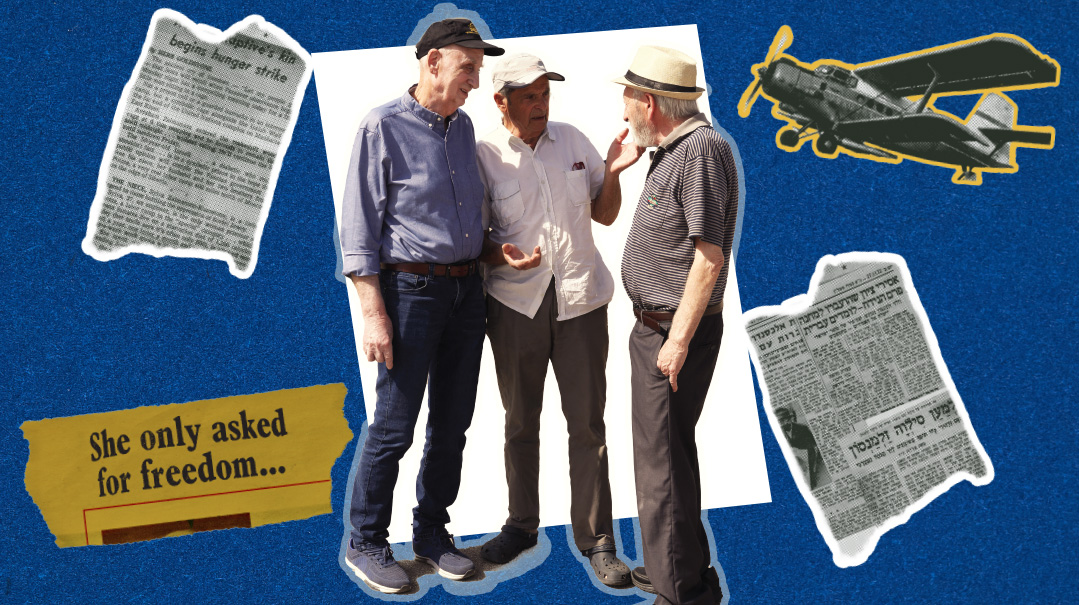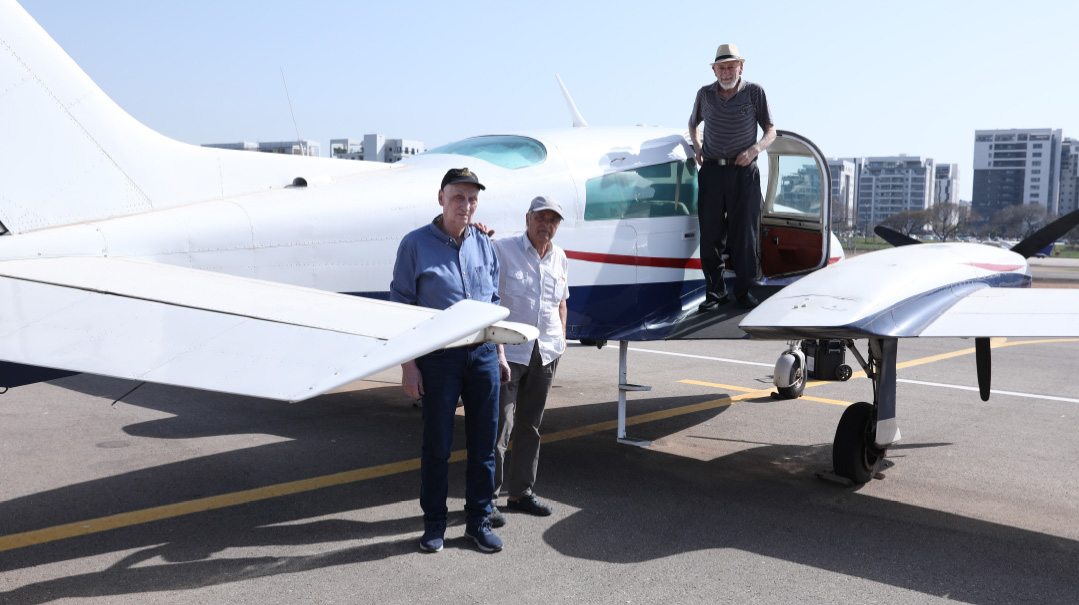Flight for Freedom
| June 6, 2023Fifty years ago, these refuseniks tried to hijack a plane — and they're still soaring

Photos: Menachem Kalish, Mishpacha archives
ITwas June 1970, and after decades of Soviet oppression, a small band of Jewish refuseniks decided to hijack an empty propeller plane and steer it out of Soviet airspace. Fifty-three years later, some of those “hijackers” — retirees living in Israel after imprisonment in the Soviet Gulag — retell the story that gripped the world and opened the doors for thousands of others to fly away
The early 1970s were fraught with a veritable epidemic of skyjackings for political or financial gain. Between 1968 and 1972, over 130 US aircraft alone were overrun by hijackers holding planeloads of innocent passengers hostage while demanding ransoms, the freeing of terrorists, or political asylum. But those who are old enough surely remember a particularly noble and courageous hijacking plan with a very different agenda — one that would change the face of the Soviet Jewry movement and create so much international pressure that the locked gates of the Iron Curtain would finally open.
Fifty-three years ago this week, a small band of Soviet Jewish refuseniks attempted a daring — if improbable — escape to Israel. The Leningrad hijacking plot — known as “Operation Wedding” — is a powerful modern-day story of courage and commitment by a group whose Jewish identity was just beginning to reemerge after decades of Soviet oppression.
It was 1970, three years after the Jewish State’s miraculous victory in the Six Day War. While anti-Israel propaganda was fed to the Russian proletariat, news of Israel’s supernatural successes had made its way into the consciousness of Soviet Jews and ignited a new passion, firing up the sparks of nearly-extinguished embers. Underground, clandestine classes in Hebrew language and Jewish tradition were organized, and many idealistic young people began to apply for exit visas in order to escape the grip of the Russian bear.
After having been refused visas and stripped of their professions (the general fallout for applying for a visa), a group of 16 dissidents plotted to buy all the seats on a small 12-seater Antonov An-2 propeller plane, make a local flight from Leningrad to Priozersk under the guise of a trip to a wedding, remove the pilots, and continue across the border to Finland and then on to Sweden, with Israel as their final goal. On the morning of June 15, 1970, 12 of the group arrived together in Smolny Airport near Leningrad (another four were to be picked up in Priozersk), only to land in the waiting arms of the KGB, who’d been tailing them all along.

It wasn’t a Antonov An-2 propeller plane, but that didn’t stop Soviet Jewish heroes Arie Chanoch, Wolf Zalmanson and Boris Penson from climbing the light craft on the Herzliya airfield last week, bringing back memories of half a century when the eyes of the world were focused on their future
While the “hijackers” were convicted of high treason and all served long, harsh prison sentences in the Soviet Gulag, due to international pressure they were eventually released, and by drawing attention to Soviet human rights violations, their long-term goal — the loosening of emigration restrictions — was realized.
Three of those “hijackers” — men in their 70s who’ve been living in Israel for decades — came together for a conversation of memories with Mishpacha in advance of June 15, the anniversary of the day that would change their lives — and those of the entire refusenik community — forever.
“For years, the Soviets continued to label us as hijackers, terrorists, cold-blooded murderers. Those accusations still appear in the KGB records. But who cares?” says Wolf Zalmanson, who was sentenced to ten years in a Soviet prison and today lives in Herzliya, retired from a long and successful career in Israel’s aerospace industry. “We’re home, in Eretz Yisrael. They can say what they want.”
He’s joined by Boris Penson, today a well-known artist and resident of Moshav Hoglah near Netanya, and Arie Chanoch of the Shomron, all of whom agree that their personal sacrifice was worth it for the hundreds of thousands of Jews who were able to leave the Soviet Union in the wake of the operation and ensuing politically charged trial — the inspiration for several suspense novels and films, the background of several autobiographies, and even the incentive for a popular Destiny song.
Oops! We could not locate your form.







